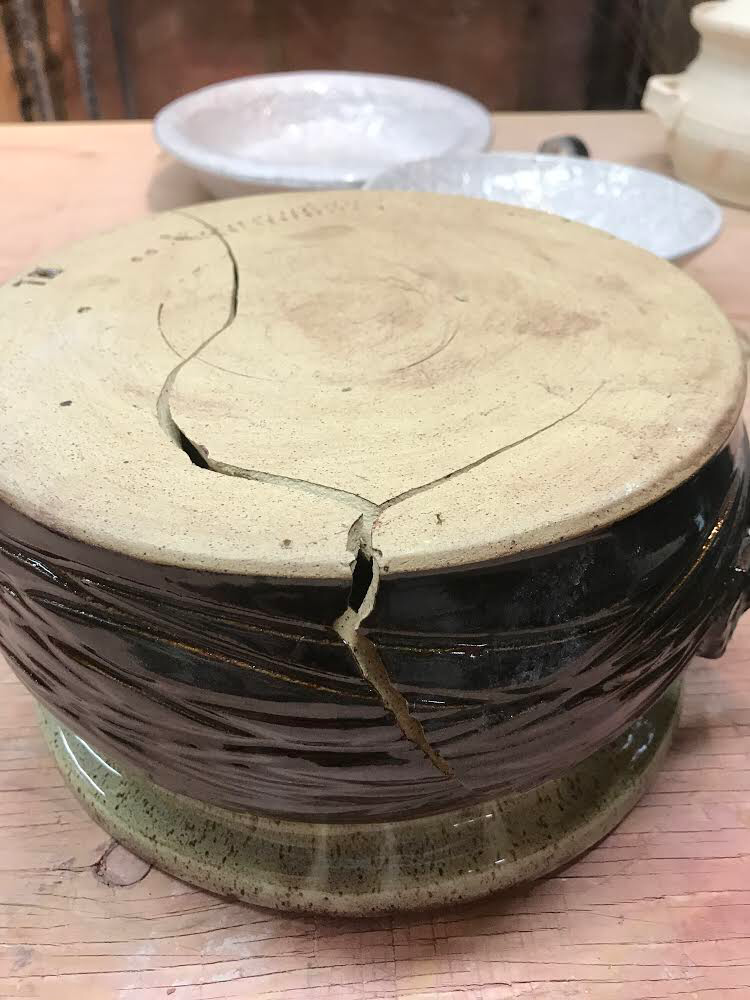Cracking casseroles. Why?
The cracks happened on heat up (since they have opened up wide). A combination of issues contribute. The kiln shelves heat-sink the wide flat bottoms, vessel walls are thick, there is some unevenness of wall thickness and only a 30-minute hold at 220F to remove glaze water from the bisque (that could have left dampness in thicker sections). Factors like these combine to produce temperature gradients within the piece. The firing schedule rose rapidly from 250-2100F (400F/hr) amplifying these gradients as it climbed. At insight-live.com/glossary/162">quartz inversion these gradients produced a wave of volumetric change moving through the bisqued piece and this likely initiated a crack where stresses met at a combination sharp-contour and thickness-change, the bottom corner.
Pages that reference this post in the Digitalfire Reference Library:
Heavy and thick plates cracking? What to do?, Quartz Inversion, Dunting and Cracking of Clay Bodies During Firing

This post is one of thousands found in the Digitalfire Reference Database. Most are part of a timeline maintained by Tony Hansen. You can search that timeline on the home page of digitalfire.com.
